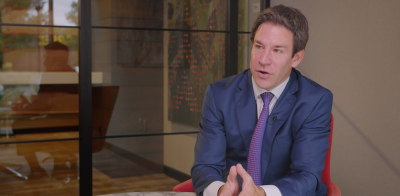For the mid-April strategy note, we will digress from broader economic and market commentary (particularly given the continued dismal outlook for equities and bonds aka 60/40 asset allocation) and discuss one of our favorite focused macro and free cash flow investment theses: Copper and copper miners, and whether or not we could potentially be in a long-term supercycle for the conductive metal.
- First, let’s roughly define a commodity super cycle: A period of time, typically multiple years, when a commodity enjoys exceptional long-term performance from both a structural demand shock as well as supply constraints.
- When most market participants speak about commodity supercycles, the most recent frame of reference in the roughly 2001 to 2011 period, when just about every major commodity enjoyed a multi-year period of strong performance. This was driven by the supply constraint of low production investment in the late 1990s. As a reminder, the late 1990s was another period when investor attention was focused on secular growth stores (aka the internet bubble not the more recent “transformational technology bubble”). Supply constraints combined with a demand shock when China burst onto the global stage as a relentless and massive new consumer of commodities to modernize their economy through infrastructure investment.
- Over that roughly 10-year period, copper was up approximately 700% in price as copper miners struggled to keep up with a voracious new consumer, and copper miners were up even more. Eventually, however, supply more than caught up to demand (capitalism works after all), and as Chinese and global demand growth slowed, copper and other major commodities experienced a long bear market losing around half its value from the early 2011 peak to the early 2016 low; started to rally back and then sold back off and bottomed out again in the March 2020 pandemic market collapse.
- Once again, similar to the late 1990s, commodities and copper became unloved assets and copper miners like most commodity producers became much more disciplined with investment in new production (nothing like an approximate 90% loss in share price to focus the mind of management).
- Since the pandemic bottom, as massive increases in money supply drove markets higher and fiscal stimulus and then the waning of the pandemic drove global growth higher, copper has experienced a surge in price and roughly doubled from its pandemic low. The majority of commodities have experienced a similar cyclical surge and some like oil and agricultural commodities have performed far better; most recently, driven by additional supply constraints caused by the Russian invasion of Ukraine. However, one of the differences between copper and other major commodities is that copper may be the lone major commodity that can continue to benefit from not only supply constraints but also a structural demand shock: The electrification of the global economy. As a reminder, copper is not only used for building construction, electronics, and consumer products, but will be more heavily relied upon than ever for electricity transmission for power grids from windmill and solar projects. Additionally, there will continue to be more widespread use in battery powered cars, trucks, and buses.
- To recap, even prior to inflation taking off, the supply/demand picture for copper was extremely supportive of higher prices and impressive levels of earnings and FCF (free cash flow) generation for copper miners as far as the eye can see. This is principally driven by: a) Tight supply caused by close to a decade of underinvestment in CapEx/production from the hangover from the last great commodity supercycle driven by Chinese demand and b) increasing demand driven by the inexorable electrification of the global economy through infrastructure and clean energy investments.
- Ok, so copper has performed well, and the outlook looks pretty attractive, but given the recent surge in price, does it make more sense to focus on copper the commodity itself or copper miners? Well, typically for a variety of reasons, if you want to be long a commodity, just go long the commodity and keep the investment thesis simple. However, for a variety of reasons, it may make more sense now to express the thesis through copper miners.
- First, the large increase in price has caused impressive earnings and cash flow growth in copper miners. No surprise there, since commodity producers are supposed to have positive operating and balance sheet leverage to rising commodity prices, provided they are not squandering windfall profits on profligate, uneconomic investments. Second, copper miners are still trading at multiples below than broader market (in many cases well below) despite record profits and free cash flow. Third, in order to profit from a long copper (or any commodity) position, you need prices to keep rising whereas if you invest in copper miners, you just need prices not to drop significantly in order for earnings and cash flow to remain strong. Lastly, given the length and depth of the previous bear market in commodities, copper and copper miners experienced dramatic underperformance relative to equity markets and growth-focused investments. So copper miners became an unloved and underinvested space. If the recent mean reversion between growth and commodities continues, copper miners along with other commodity producers could enjoy some degree of multiple expansion.
- One probably needs an iron stomach to invest in any commodity or commodity producer since the volatility can be breathtaking. Furthermore, despite what appears to be the potential for a long-term supercycle in copper, we can almost guarantee that copper and copper miners will suffer meaningful mark to market losses in the next recession. Furthermore, copper’s recent surge has undoubtedly been amplified by massive money supply growth and the recent surge in inflation. Now that the Fed is tightening policy and money supply growth has slowed, it will be more difficult for financial assets to increase in price and easier to decline.
- However, copper miners are one of the few areas of basic materials and commodities that could benefit from a potential supercycle and deliver attractive relative returns over the next several years or beyond.
With higher inflation and volatility, allocating to real assets or investing in real asset focused funds as an inflation hedge and a way to monetize volatility is yet another example of why the time for alts is now.



